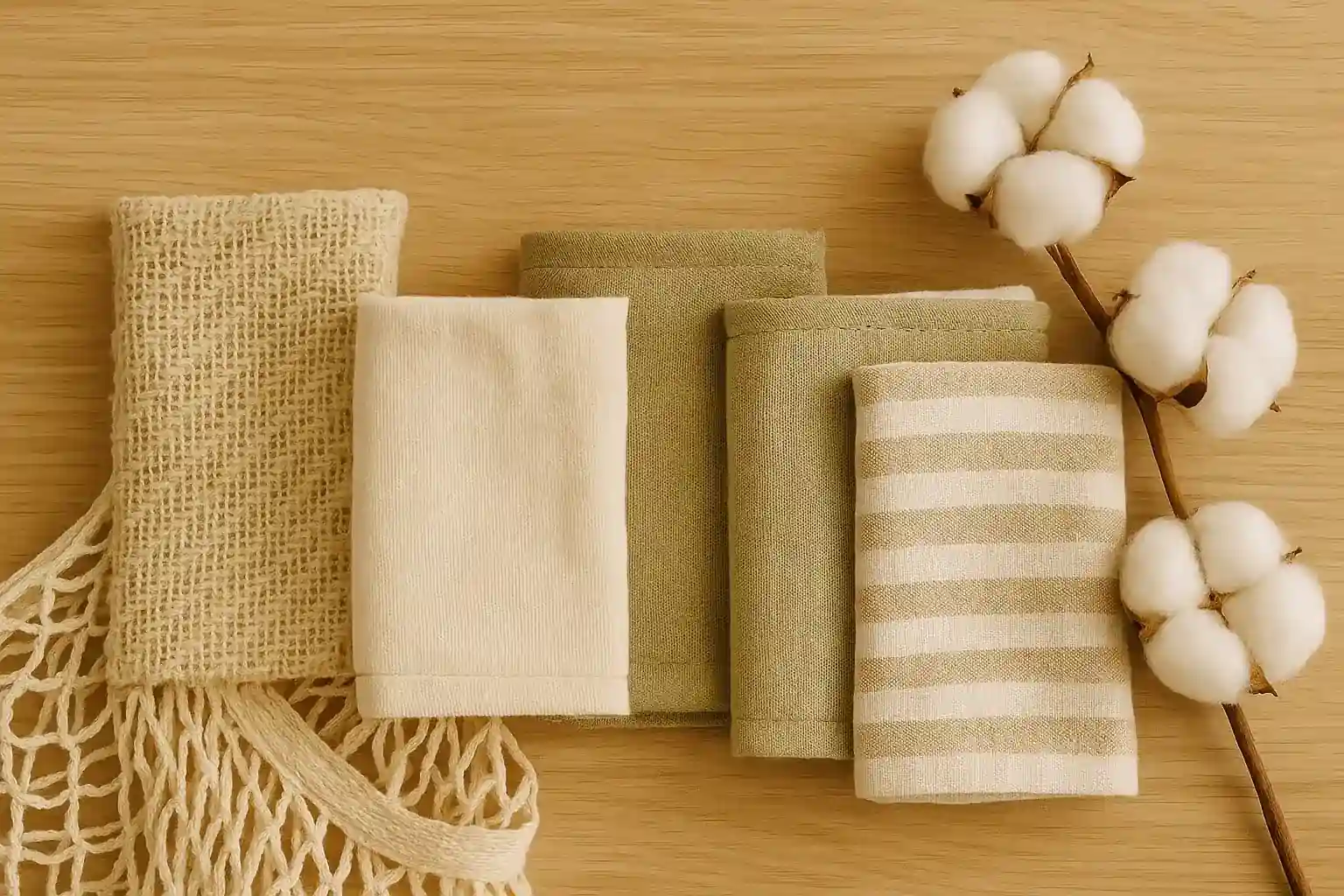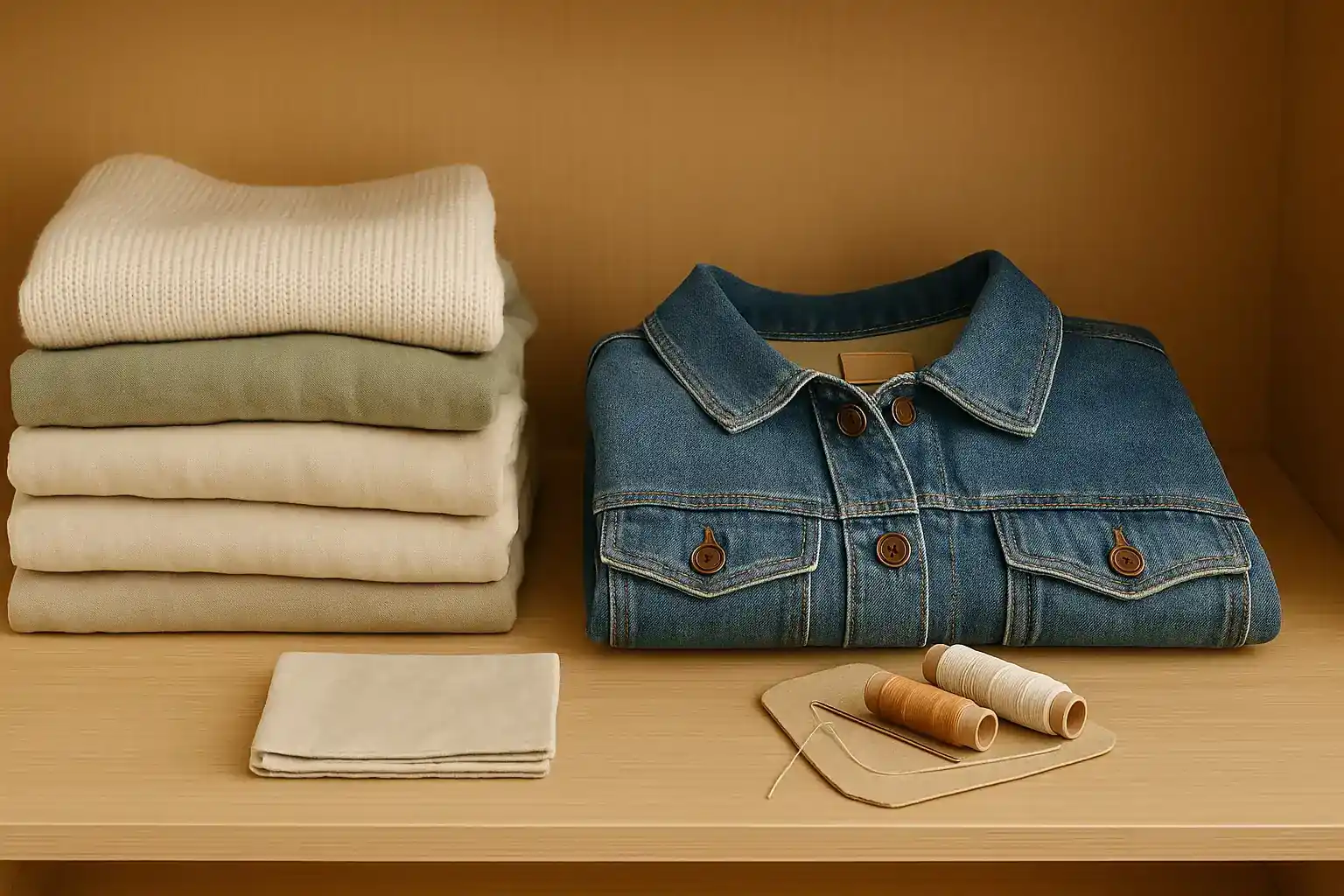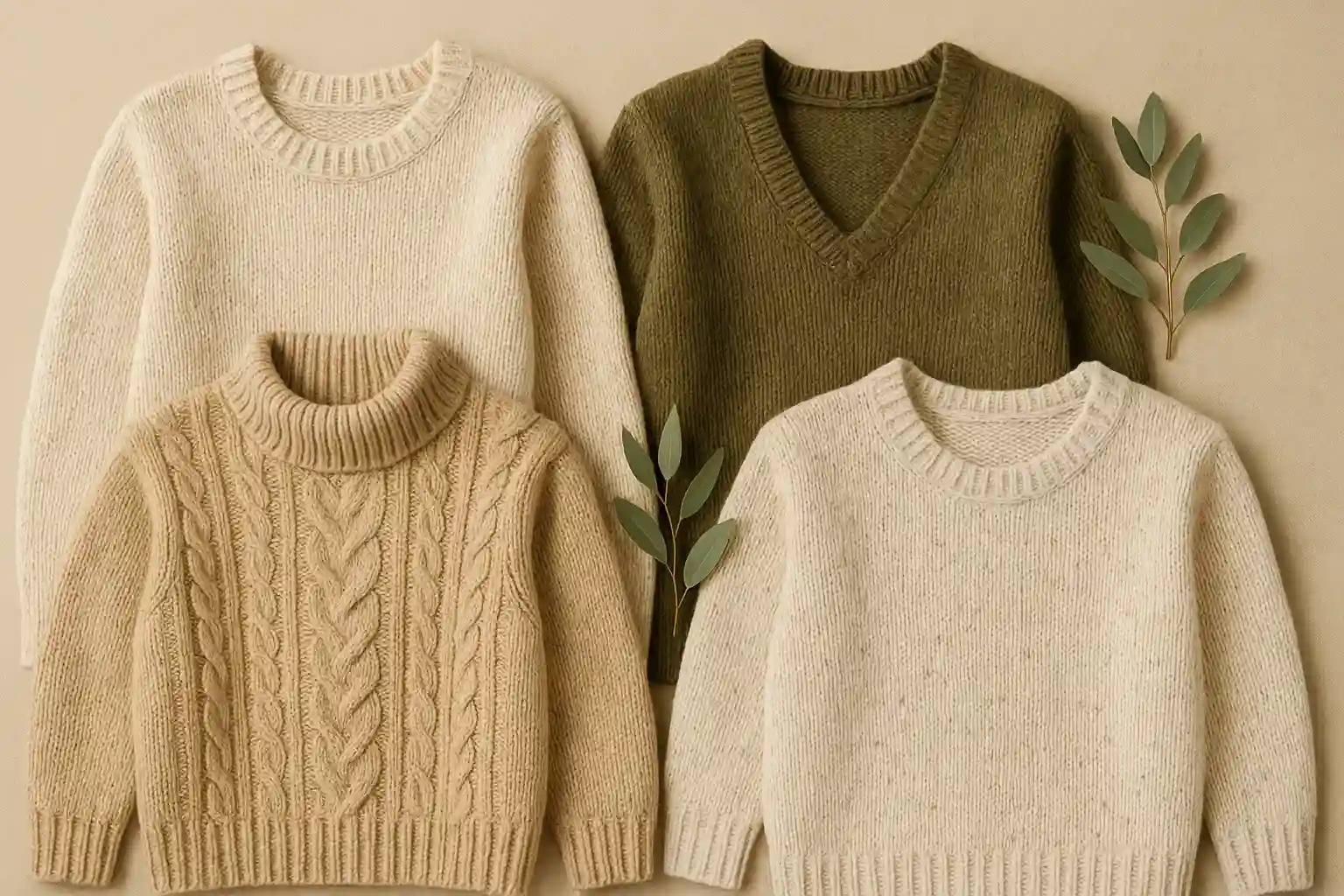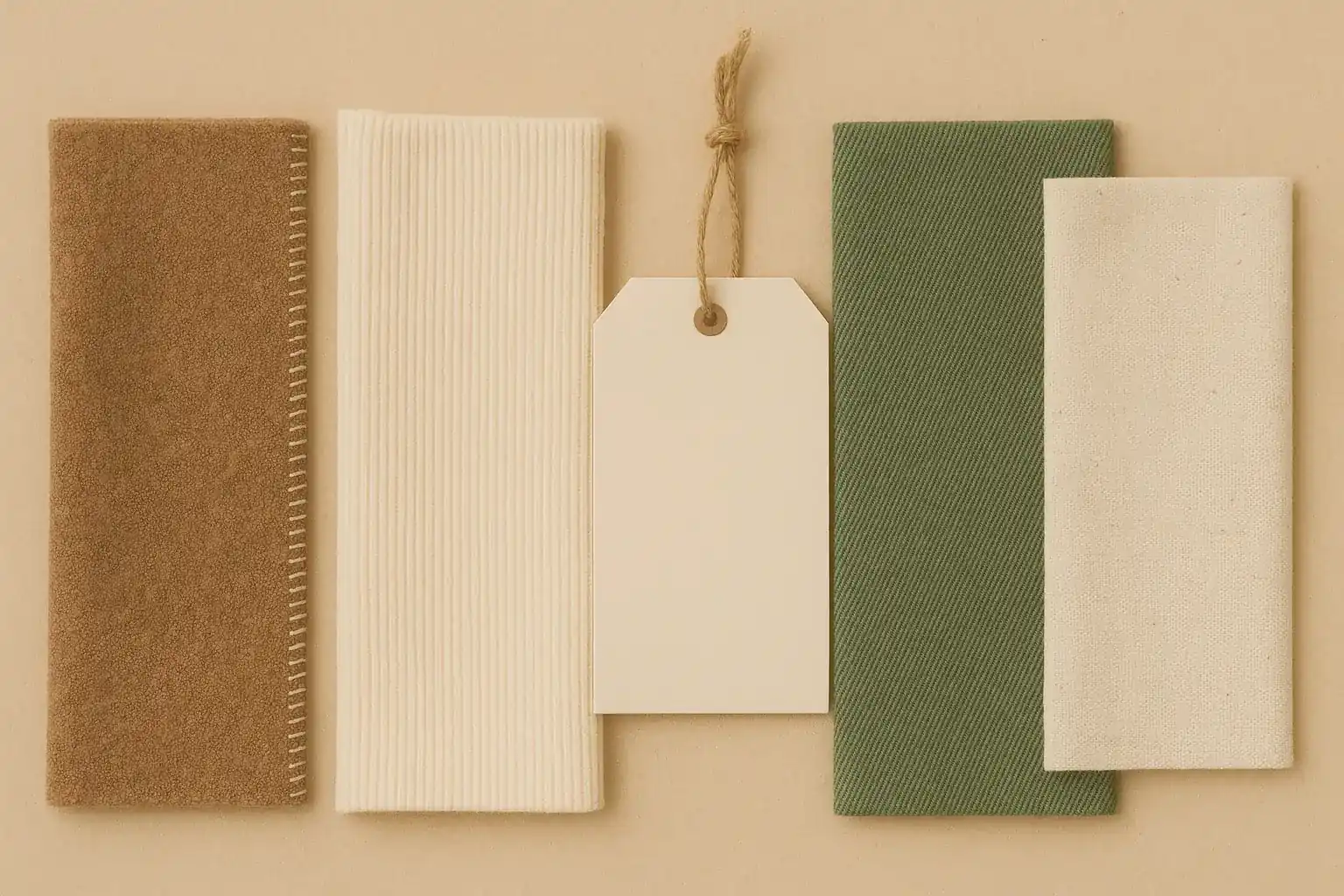Eco-Friendly Fabrics 101: What to Look For

The journey towards a more environmentally conscious wardrobe often begins with understanding the materials our clothes are made from. Beyond the style, color, or cut, the fabric itself holds a significant story about its impact on the planet. Choosing sustainable fabrics is a fundamental step in reducing our fashion footprint and supporting a more responsible industry.
But with so many terms like "organic," "recycled," "biodegradable," and "eco-friendly" being used, it can feel overwhelming to know what to look for. This guide aims to demystify the world of sustainable fabrics, explaining why they matter and what characteristics indicate a more environmentally sound choice.
Conventional fabric production often involves processes that are resource-intensive, generate significant waste, and can use harmful chemicals. For instance, standard cotton farming can require vast amounts of water and pesticides, impacting soil health and water quality. The production of synthetic fabrics like polyester relies on fossil fuels and contributes to microplastic pollution. Recognizing these issues highlights the critical need for alternatives.
Sustainable fabrics are materials sourced and produced in ways that minimize negative environmental impacts. This can involve reducing water and energy consumption, avoiding harmful chemicals, promoting biodiversity, utilizing waste materials, or ensuring that the material can biodegrade or be recycled at the end of its life.
Let's explore some common types of sustainable fabrics and what makes them a better choice:
Exploring the World of Sustainable Fabrics
Choosing the right material involves considering its origin, how it's processed, and its end-of-life potential. Here are some key categories of environmentally friendlier textiles:
1. Natural Fibers with a Lower Environmental Footprint:
- Organic Cotton: Unlike conventional cotton, organic cotton is grown without synthetic pesticides, herbicides, or genetically modified organisms (GMOs). This significantly reduces chemical runoff into waterways and is better for the health of farmers and the soil. It typically uses less water than conventional cotton, especially in rain-fed areas.
- Linen: Derived from the flax plant, linen is known for its durability and requires relatively little water and no pesticides to grow. The entire plant can be used, resulting in less waste. It is also biodegradable.
- Hemp: Similar to linen, hemp is a highly sustainable crop. It grows quickly, requires minimal water and no pesticides, enriches the soil it grows in, and is incredibly durable. Hemp fabric is also biodegradable.
2. Regenerated Cellulosic Fibers from More Sustainable Processes:
- Tencel™ Lyocell: This is a branded type of lyocell fabric produced from sustainably sourced wood pulp (typically eucalyptus, spruce, or birch). The manufacturing process uses a closed-loop system, meaning the solvents used to break down the wood pulp are recycled and reused, minimizing waste and harmful emissions. It requires less water and energy than conventional rayon or viscose.
- Modal: Another type of rayon made from beechwood. While not always produced in a closed-loop system, it can be more sustainable than traditional viscose depending on the manufacturing process. Look for Modal from companies committed to environmental responsibility.
3. Fabrics Made from Recycled Materials:
- Recycled Polyester (rPET): This fabric is made from recycled plastic, often post-consumer plastic bottles. Utilizing existing plastic waste reduces the need for virgin petroleum-based polyester production, saving energy and diverting plastic from landfills. However, rPET can still shed microplastics when washed.
- Recycled Cotton: Made from post-industrial (scraps from manufacturing) or post-consumer cotton waste (old clothes). Recycling cotton reduces textile waste and the need to grow new cotton, saving water, energy, and land. However, recycled cotton fibers can be shorter, sometimes requiring blending with other fibers for strength.
4. Innovative and Emerging Sustainable Textiles:
- This category includes exciting new materials being developed from alternative sources, such as Piñatex (a leather alternative made from pineapple leaf fibers), mushroom leather, and fabrics made from agricultural waste or even algae. While some are still in early stages, they represent promising advancements in sustainable fabrics.
What to Look For When Shopping for Sustainable Fabrics
Navigating labels and brand claims requires a discerning eye. Here's what to consider when making your next purchase with environmental fashion in mind:
- Certifications Matter: Look for reputable third-party certifications on garment labels or brand websites. These certifications provide independent verification of sustainable practices:
- GOTS (Global Organic Textile Standard): Ensures strict environmental and social criteria are met throughout the entire supply chain of organic textiles.
- Oeko-Tex Standard 100: Tests for harmful substances in textiles.
- FSC (Forest Stewardship Council): Certifies that wood pulp for fabrics like Lyocell or Modal comes from responsibly managed forests.
- GRS (Global Recycled Standard): Verifies recycled material content and ensures responsible social and environmental practices in production.
- Brand Transparency: A truly committed brand will be transparent about its sourcing, manufacturing processes, and sustainability efforts. Look for detailed information on their website about where their fabrics come from and how their clothes are made.
- Understand Fabric Blends: Many garments are made from fabric blends. A blend of organic cotton and recycled polyester, for example, can combine the benefits of both materials. However, some blends can be harder to recycle at the end of the garment's life.
- Consider Longevity and Care: The most sustainable fabric is one that you will wear for a long time. Choose fabrics that are durable and suit your lifestyle. Also, consider the care requirements – opting for fabrics that require less frequent washing or can be washed in cold water reduces energy and water usage during the use phase of the garment's life.
- Beyond the Fabric: Remember that fabric is just one aspect of a sustainable garment. Also consider the garment's construction, the dyes used (look for low-impact or natural dyes), and the ethics of the labor involved in its creation.
Choosing sustainable fabrics is a powerful way to align your fashion choices with your values. By understanding the impact of conventional materials and knowing what to look for in more eco-friendly textiles, you can make informed decisions that contribute to a healthier planet and support a more responsible future for fashion. It's a journey of continuous learning, but every conscious choice to prioritize sustainable fabrics makes a difference.
Related Blogs

10 Transformative Wardrobe Swaps for a Lighter Environmental Fashion Footprint
Learn how to reduce your fashion footprint with impactful wardrobe swaps.

Wrap Yourself in Responsibility: Choosing Sustainable Alternatives to Acrylic Sweaters
Upgrade to durable and breathable wool (certified farms), alpaca, or Tencel-blend knits.

Decoding Fabric Labels: What's Really Sustainable?
Insights on decoding fabric labels in a sustainable way.

Outsmarting the Dry Cleaner: Choosing Machine Washable Naturals for a Toxin-Free Wardrobe
Avoid toxic PERC solvents by opting for machine washable organic cotton and linen clothing.

Step Lightly: Choosing Sustainable Alternatives to Nylon Stockings
Opt for recycled nylon, biodegradable, or ladder-resistant hosiery for longer wear and less waste.

Fastening the Future: Choosing Sustainable Alternatives to Plastic Buttons
Opt for biodegradable coconut shell, corozo, or wood buttons for eco-conscious clothing.
Stay in the Loop
Get tips and insights tailored to your interests — no spam, just sustainability.